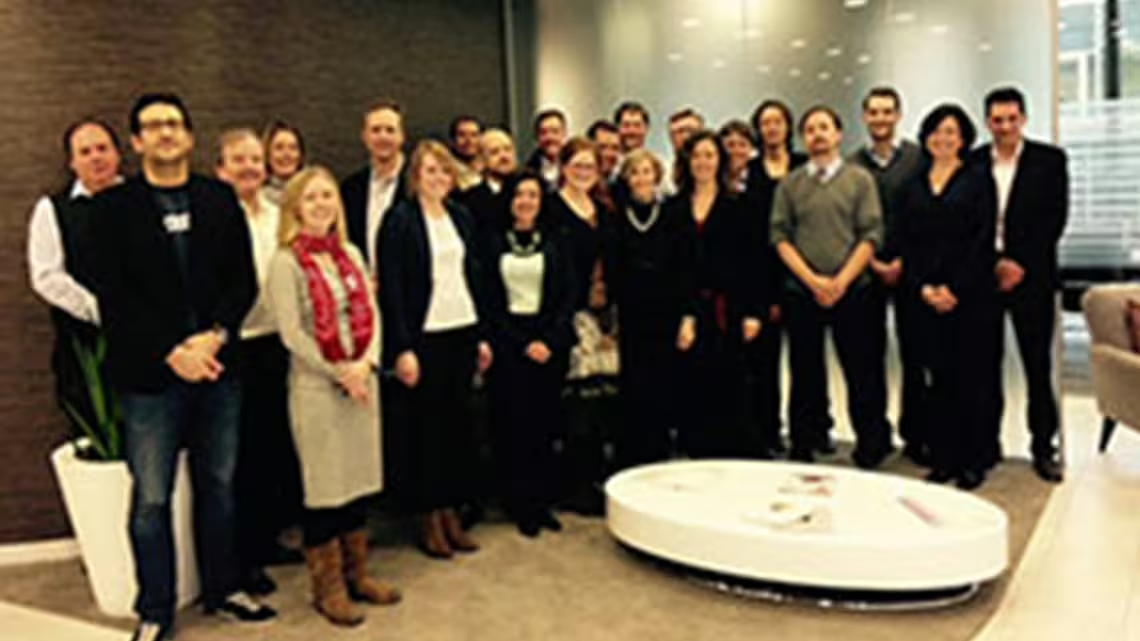It’s difficult to communicate the level of time, experience, trust and effort that went into the Natural Capital Protocol development process. But looking back over the last two years, we can try.
In numbers:
Working on behalf of the Natural Capital Coalition, our technical writing group consisted of eight companies, seven consultancies, two conservation organizations, two membership organizations and one university. We were 25 individuals who worked closely together, on every element of the Protocol, for two whole years.
The writing process involved at least 300 hours of calls (only on content development, that’s not counting coordination!), 12 workshops and meetings, over 300 versions (including the various iterations of individual steps and the full Protocol), as well as 21 kg of Swiss chocolate (a conservative estimation) imported and distributed by WBCSD to keep brain power going through long days of flip charts and whiteboards.
Together, and often at unsociable hours, the technical group battled with every detail of the 130-page document we now call the Protocol.
We went back to ask some of our members what this process meant to them.
For many, the intense level of collaboration was an indicator for the gravity and magnitude of the task at hand.
Kering, Natura and Nestlé representatives marvelled that the sheer number of logos aligned on the Natural Capital Coalition’s Protocol website. They serve as visual confirmation of the “most significant collaborative effort” they have ever seen.
Christopher Earl, Safety, Security, Health and Environmental Data Manager at Roche agreed, acknowledging the symbolism behind collaboration of the partners involved, We were really impressed with the way that all organizations worked together, especially with known competitors being at the same table. We fully recognize the trust and respect within the whole technical group.
For many, the effort put forth by so many competing organizations confirmed the significance of the Protocol. Further, the fact that all involved saw the project as a serious, non-competitive effort, without being constrained or limited by politics, illustrated a firm global commitment to addressing natural capital concerns.
The enthusiasm of the group added to our appetite for debate and perfectionism. With so many passionate experts together in one room, it was not always easy but it was certainly always interesting. Earl added “the amount of time and debate was amazing, especially on details like the definition of ‘Natural Capital’ – we thought that would be the easy part!”
Much to the relief of the corporate members in the team, we prevailed over the pursuit of perfection, we overcame complexity, and we produced a highly pragmatic and usable document. We owe serious gratitude to Rosimeiry Portela, Conservation International; Holly Dublin, The B Team; James Spurgeon, SustainValue; and Will Evison, PwC, for their technical leadership, and the whole team for helping us reach this outcome.
We’ve built strong relationships, and made a giant leap towards a more sustainable future.
Bianca Nijhof, Global Account Leader at Arcadis, acknowledged the special nature of collaboration: The trust that has been built is amazing, it was a great journey and, in a couple of years, we will undoubtedly look back on this project and acknowledge it as something really significant. Arcadis is proud to have been involved.
WBCSD continues to endorse and promote the need for more collaboration, more transparency, and bolder leadership if the business community is to progress towards better integration of non-financial capital.
At WBCSD, we will always value our role at the forefront of the Protocol development process, acting on behalf of the Natural Capital Coalition. We hope that the outcome encourages new ways of thinking and working in the sustainability space.
This article is part of a series around the Natural Capital Protocol that WBCSD led the development of on behalf of the Natural Capital Coalition, working with many experts. Check out WBCSD’s views on external disclosure and the resources needed to carry out a natural capital assessmen
Related
Content

5 ways to encourage sustainable behavior through integrated corporate performance
5 September, 2018

License to innovate: Breakthrough strategies for social impact
11 March, 2016

New guidance for business to assess and value its freshwater impacts
26 November, 2021

